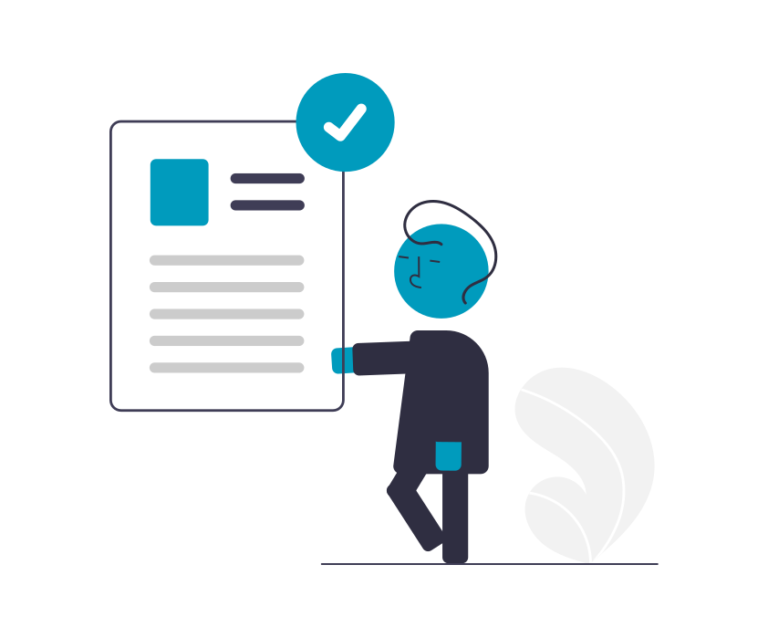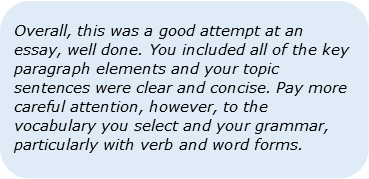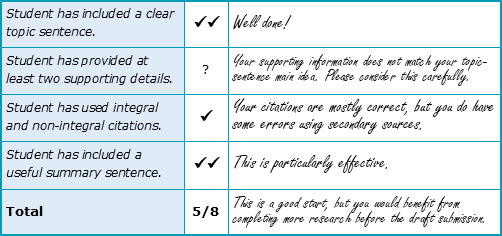What should I expect from university feedback?

This is the first of three chapters about Dealing with Feedback. To complete this reader, read each chapter carefully and then unlock and complete our materials to check your understanding.
– Understand the purpose and benefits of tutor feedback
– Explore the different types of feedback at university
– See examples of rubrics, criteria and error-correction codes
Chapter 1
For most bachelor’s students, studying at university will be just as much about the experience of moving house, making friends and the comradery of clubs and societies as it is about assignments or lectures and seminars. It is therefore perhaps understandable that many new students may have never considered the importance of receiving feedback on their academic assignments, yet knowing how to receive and respond to feedback is a vital skill for academic success.

In this short three-chapter reader, we will discuss the different types of feedback and what to expect (Chapter 1), we will explore how to receive and respond to feedback (Chapter 2), and we will decode ten of the most common feedback comments that your tutors may provide (Chapter 3). By following these chapters carefully, and by unlocking, downloading and completing the Chapter 1-3 Worksheets, you should feel more prepared to deal with this valuable academic experience.
What is the purpose of coursework feedback?
Generally speaking, when a tutor provides feedback it is with the aim of supporting a student’s learning and development across a number of key areas, such as grammar, vocabulary and skills. The exact purpose of this feedback, however, depends on when it is provided and the type of assignment you are completing. Dealing with the when, there are two occasions in which feedback may be provided:
Occasion 1: During the Editing Process
During your time at university, you may receive feedback which offers specific advice on how to improve a particular assignment at the drafting and editing stage. Whether you’re creating a dissertation proposal, a presentation or perhaps a short essay, your tutor may wish to see evidence of research, a plan for moving forwards, an example section (such as a body paragraph) or the whole draft. This style of feedback is particularly common in foundation years when students require a little more guidance about academic expectations.
Occasion 2: After Submission
Alternatively, your tutor may provide feedback after you have submitted your assignment – usually when receiving your grade. At this stage, the purpose of the feedback may be to indicate what you did well and what prevented you from receiving a higher mark. Students should pay careful attention to tutor comments at this stage as they will be useful for receiving a better grade in the future.
What are the different types of feedback?
Feedback may be delivered orally, either in person or via a recording, or it may be written as paragraphs, bullet-points or short comments. As the following examples show, tutors may also use an error-correction code for language and formatting errors to encourage students to think carefully about the mistakes they’ve made:



How will I receive feedback?
How you receive feedback will be at the discretion of your tutor. You may be alone with your tutor in a tutorial or you may be in groups with other students. Likewise, the feedback may be general, exploring common errors, or it may be specific to the work you’ve produced. Ultimately, experienced tutors will use a mixed methods approach as this provides students with the widest variety of experience and allows them to help themselves and each other. We’ve listed four of the most common types below.
Type 1: Group Feedback
This type of feedback is commonly provided during seminars and may be offered to the whole class or to smaller groups of students. When you receive group feedback, you should expect your tutor to focus on common errors which may need some in-class tuition to overcome, such as writing topic sentences or including research.
Type 2: One-to-One Tutorials
Like group feedback, another type of synchronous (live) feedback is the academic tutorial. These are usually provided at the draft stage of an academic assignment, perhaps as a last opportunity for formal feedback before the final submission. To make the most of these student-led interactions, students should arrive prepared to ask questions about their work and ready to clarify any comments they didn’t understand.

Type 3: Asynchronous Feedback
Conversely, students will also commonly receive asynchronous (delayed) feedback. While this can be in the form of recorded audio snippets, written feedback is the most common format. In this situation, tutors may assess a student’s work according to a particular rubric or assessment criteria (such as the body-paragraph criteria below), offering a grade, guidance on how to improve and comments about what the student should prioritise:

Type 4: Peer Feedback
While peer-correction is one of the least common types of feedback for assessed work (due to collusion), for other types of assignments it can be very useful to have students provide opinions on each other’s work. The offering of constructive feedback can be a productive learning process as it helps students to develop the skills of identifying errors and of providing and receiving criticism in a respectful way, which are valuable transferable skills.
Good work. Now that you know what feedback is and can recognise its different types, read on with Chapter 2 to explore seven reflections for better managing and making the most of the constructive criticism you receive.
To reference this reader:
Academic Marker (2022) Dealing with Feedback. Available at: https://academicmarker.com/academic-guidance/teaching-and-learning/correspondence/dealing-with-feedback/ (Accessed: Date Month Year).
Downloadables
Once you’ve completed all three chapters in this short reader about Dealing with Feedback, you might then wish to download our Chapter Worksheets to check your progress or print for your students. These professional PDF worksheets can be easily accessed for only a few Academic Marks.
Chapter 1 explores the topic: What should I expect from university feedback? Our Chapter 1 Worksheet (containing guidance, activities and answer keys) can be accessed here at the click of a button.
Chapter 2 explores the topic: What are 7 reflections when receiving feedback? Our Chapter 2 Worksheet (containing guidance, activities and answer keys) can be accessed here at the click of a button.
Chapter 3 explores the topic: Which 10 feedback comments are most common? Our Chapter 3 Worksheet (containing guidance, activities and answer keys) can be accessed here at the click of a button.
To save yourself 2 Marks, click on the button below to gain unlimited access to all of our Dealing with Feedback Chapter Worksheets. This All-in-1 Pack includes every chapter, activity and answer key related to this topic in one handy and professional PDF.
Collect Academic Marks
-
100 Marks for joining
-
25 Marks for daily e-learning
-
100-200 for feedback/testimonials
-
100-500 for referring your colleages/friends